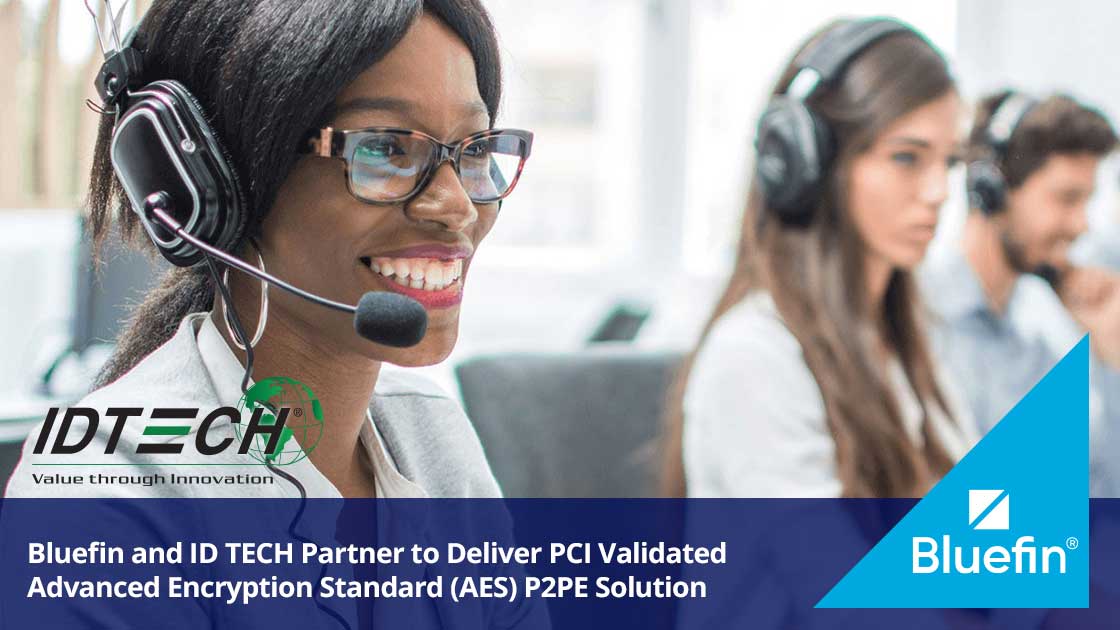November 27, 2023 – Atlanta, GA – Bluefin, a leader in integrated payments and data and payment security, today announced it has teamed up with ID TECH to deliver PCI validated Advanced Encryption Standard (AES) encryption solutions to Bluefin’s customers and partners using their Decryptx® and PayConex™ payment security solutions. AES is a specification for the encryption of electronic data established by the U.S. National Institute of Standards and Technology (NIST).
Through this collaboration, Bluefin customers ordering new ID TECH SREDKey 2 encrypting keypads can receive the benefits of AES, a significantly stronger security protocol for protecting sensitive cardholder data.
“Through our partnership and collaboration with ID TECH, Bluefin is one of the first in the industry to commercialize the AES standard,” said Tim Barnett, Chief Information Officer at Bluefin. “The ID TECH SREDKey was one of the very first devices that Bluefin provided as part of our PCI-validated point-to-point encryption (P2PE) solution and it has become one of our best-selling P2PE devices, particularly with our over 1,000 healthcare and higher education clients. AES is an important security protocol for many use cases including back-office payment processing, especially for multi-nationals who want to enter credit card numbers in multiple countries. Bluefin can also utilize AES in our ShieldConex tokenization process.”
“As pioneers in delivering secure payments technology, both Bluefin and ID TECH continue to expand and strengthen our payments offering by offering AES 128 encryption to our mutual customers,” said Justin Ning, VP of Product Management at ID TECH. “AES 128 provides our customers with the latest encryption technology and peace of mind that their payment environment is secure. Supporting AES 128 encryption within ID TECH’s payment hardware and Bluefin’s P2PE solution is a testament to both companies’ commitment to delivering secure payment solutions and we are extremely excited to partner with a long term partner in Bluefin.”
About ID TECH
ID TECH is a world-recognized leader in the design and manufacture of secure payment solutions, ranging from state-of-the-art contactless/NFC payment devices to EMV and Magstripe readers. For more than 30 years, ID TECH has built a reputation based on technical excellence, innovation, and a commitment to superior customer service. Headquartered in Cypress, California, USA (with additional engineering centers in Rocklin, California, Shanghai, China, and Taoyuan City, Taiwan), ID TECH is an industry leader in delivering payment solutions across the globe.
For more information about ID TECH, please visit http://www.idtechproducts.com.
About Bluefin
Bluefin is the recognized integrated payments leader in encryption and tokenization technologies that protect payments and sensitive data. Our product suite includes solutions for contactless, face-to-face, call center, mobile, Ecommerce and unattended payments and data in the healthcare, higher education, government and nonprofit industries. The company’s 300 global partners serve 35,000 connected enterprise and software clients operating in 60 countries. Bluefin is a Participating Organization (PO) of the PCI Security Standards Council (SSC) and is headquartered in Atlanta, with offices in Waterford, Ireland and Vienna, Austria.








